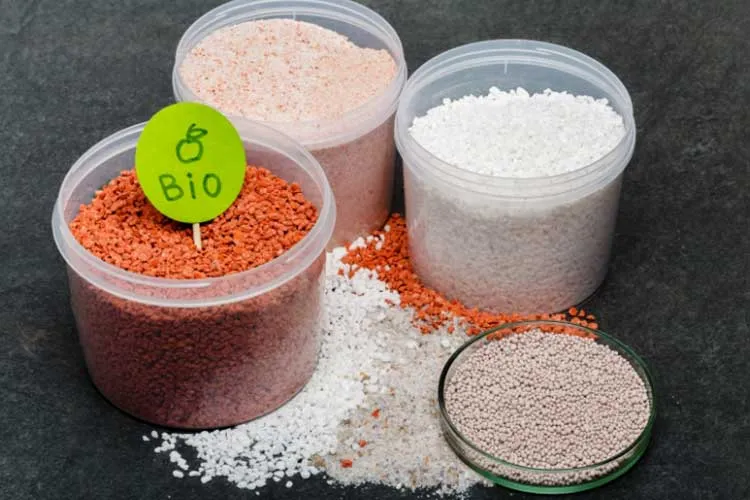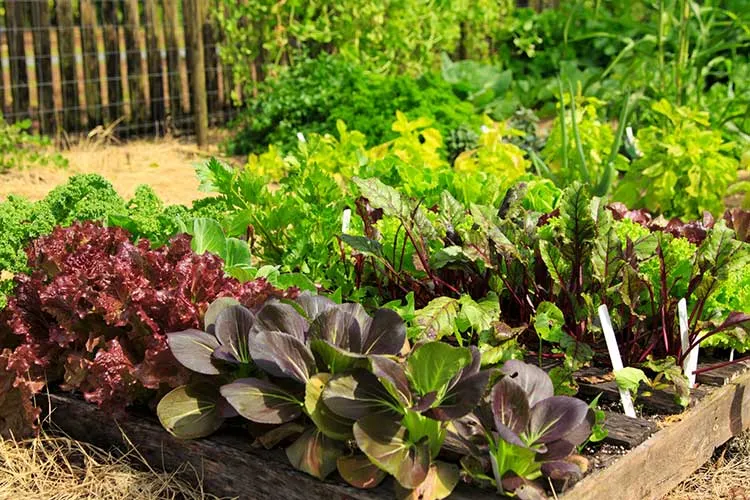Phosphorus is a critical nutrient for plant growth, directly influencing root development, flowering, and fruit production. Without enough phosphorus, plants struggle to establish strong roots, leading to weak growth and poor yields. According to soil studies, phosphorus deficiencies are common in agricultural and home garden soils, often due to nutrient depletion or poor soil conditions.
Choosing the right phosphorus-rich fertilizer can be overwhelming, with options ranging from organic sources like bone meal and manure to synthetic fertilizers like superphosphate. Applying the wrong type or amount can lead to wasted nutrients, poor plant performance, or environmental harm.
This guide breaks down the best phosphorus fertilizers when to use them, and how to avoid common mistakes to maximize plant health.
Which Fertilizer is High in Phosphorus?
Phosphorus is vital in plant development, supporting root growth, flowering, and seed production. Fertilizers rich in phosphorus are often labeled with a high middle number in the N-P-K ratio, indicating their phosphorus content. Common high-phosphorus fertilizers include bone meal, rock phosphate, and superphosphate, offering different release rates and benefits. While synthetic fertilizers provide quick phosphorus availability, organic sources improve soil health over time. Selecting the right phosphorus fertilizer depends on soil conditions, plant needs, and long-term sustainability goals. Proper application ensures maximum absorption while minimizing nutrient loss.
Signs of Phosphorus Deficiency
Plants lacking phosphorus often exhibit slow growth, weak root systems, and delayed flowering or fruiting. One of the most noticeable symptoms is a change in leaf color, with older leaves developing a dark green, purple, or reddish tint, especially along the veins. This discoloration occurs because phosphorus plays a key role in energy transfer within the plant, and a shortage disrupts normal metabolic processes.
Soil conditions significantly affect phosphorus availability. Cold temperatures, compacted soil, and imbalanced pH levels can all restrict phosphorus uptake, even when the nutrient is present in the soil. Heavy clay soils tend to bind phosphorus, making it less accessible, while sandy soils may let it leach away too quickly.
Organic matter and microbial activity help release phosphorus into a plant-available form, making soil health a crucial factor. Addressing a deficiency early with targeted amendments can restore plant vigor and productivity.
Phosphorus-Rich Manures
Manure is a valuable natural source of phosphorus, offering slow-release benefits that improve soil fertility over time. Among different types, poultry manure stands out for its high phosphorus content, making it a preferred choice for boosting this essential nutrient. It breaks down relatively quickly, providing a steady phosphorus supply to plants.
Cow manure contains moderate phosphorus levels but contributes significantly to soil structure and microbial activity, helping to unlock existing phosphorus in the soil. Composted manure, which undergoes decomposition before application, offers a more balanced nutrient profile with improved phosphorus availability.
When mixed with other organic amendments, goat and horse manure contain lower phosphorus levels but still enhance soil fertility.
The organic matter in manure improves soil structure, increasing aeration and water retention while promoting beneficial microbial activity. This enhances phosphorus availability, reducing the risk of nutrient lock-up. Proper composting before application minimizes nutrient loss and prevents excessive nitrogen that could overpower phosphorus uptake. Applying manure at the right time and rate ensures plants receive a consistent phosphorus supply throughout the growing season.
Fertilizers with High Phosphorus Content
Phosphorus-rich fertilizers come in organic and synthetic forms, each offering distinct advantages depending on soil conditions and plant needs. Bone meal, made from ground animal bones, is one of the most popular organic phosphorus sources. It releases nutrients slowly, making it an excellent long-term amendment for improving root development and flowering. However, its effectiveness depends on soil pH, as acidic soils help make phosphorus more available.
Rock phosphate is another organic option derived from naturally occurring mineral deposits. It is best suited for acidic soils, where it gradually breaks down and provides phosphorus over several seasons. While rock phosphate works well for perennial crops, it is less effective for annual plants needing immediate phosphorus.
Superphosphate, a synthetic fertilizer, delivers a fast-acting phosphorus boost, making it ideal for quickly correcting deficiencies. It is available in single superphosphate (SSP) and triple superphosphate (TSP), with TSP containing a higher phosphorus concentration. Water-soluble and readily absorbed by plants, these fertilizers provide immediate results but lack the soil-building benefits of organic amendments.
Fish-based fertilizers, including fish bone meal and liquid fish emulsion, offer another phosphorus source while supplying additional micronutrients. These organic fertilizers work well for fruiting and flowering plants, promoting healthy blooms and robust root systems. Choosing the right phosphorus fertilizer depends on soil conditions, plant requirements, and long-term health goals.
Epsom Salt and Phosphorus: A Common Misconception
Epsom salt is often mistaken for a phosphorus source but primarily contains magnesium and sulfur. While these nutrients support plant health, they do not contribute to phosphorus levels in the soil. Magnesium plays a role in chlorophyll production, while sulfur aids enzyme activity and protein synthesis. However, neither element can replace phosphorus in plant metabolism.
Better alternatives for gardeners seeking to improve phosphorus levels include bone meal, rock phosphate, or composted manure. If soil tests indicate a phosphorus deficiency, applying an appropriate fertilizer or incorporating organic matter will be more effective than using Epsom salt. Understanding the distinct roles of each nutrient ensures plants receive the right balance for optimal growth and productivity.
Homemade Ways to Add Phosphorus to Soil
Several household and garden waste materials can serve as effective alternatives to commercial fertilizers for those looking to boost phosphorus levels naturally. Bone meal, made from crushed animal bones, is one of the best natural sources of phosphorus. It releases nutrients gradually, making it ideal for long-term soil enrichment.
Banana peels, though better known for their potassium content, contain small amounts of phosphorus and can be chopped and buried in the soil to decompose. Eggshells also contribute trace amounts of phosphorus while improving soil structure. Wood ash, derived from untreated hardwood, provides phosphorus, potassium, and calcium. However, it should be applied in moderation, as excessive use can raise soil pH and reduce nutrient availability.
Another effective homemade amendment is composting from kitchen scraps, grass clippings, and plant waste. As organic matter breaks down, it gradually releases phosphorus in a plant-available form. Ensuring a well-balanced compost pile with green and brown materials enhances phosphorus availability while supporting soil microbial activity. These homemade solutions offer sustainable, cost-effective ways to maintain soil fertility without relying solely on synthetic fertilizers.
Best Time to Apply Phosphorus Fertilizer
Applying phosphorus fertilizer at the right time ensures maximum absorption and plant benefits. Since phosphorus is crucial in root development, early-season application is ideal, particularly at planting or transplanting. This allows young plants to establish strong root systems essential for overall growth and nutrient uptake.
In temperate climates, phosphorus fertilizers are best applied in early spring when soil temperatures rise and microbial activity increases. Cold soils can limit phosphorus availability, so waiting until the ground warms slightly helps improve absorption. For fall plantings, incorporating phosphorus into the soil before winter can give plants a head start in the spring.
Soil moisture also affects phosphorus uptake. Applying fertilizer when the soil is moderately moist, rather than extremely dry or waterlogged, ensures better nutrient availability. If using organic sources like bone meal or compost, adding them a few weeks before planting gives soil microbes time to break down nutrients into plant-available forms. Regular soil testing helps determine phosphorus levels and prevents unnecessary applications, ensuring plants receive the right amount without contributing to nutrient runoff.
The Risks of Excess Phosphorus
While phosphorus is essential for plant growth, excessive amounts can create serious problems for plants and the environment. One major issue is nutrient runoff, where excess phosphorus washes into waterways, leading to algal blooms that deplete oxygen and harm aquatic life. This environmental impact makes it important to apply phosphorus responsibly, following soil test recommendations rather than assuming more is better.
An overabundance of phosphorus in soil can interfere with the uptake of other essential nutrients, particularly iron and zinc. This imbalance may lead to deficiencies that weaken plant health, causing symptoms like chlorosis (yellowing leaves) and stunted growth. High phosphorus levels can also reduce beneficial microbial activity in the soil, limiting natural nutrient cycling.
Applying phosphorus fertilizers without considering soil conditions can lead to accumulation, especially in soils that naturally hold onto phosphorus. To avoid this, gardeners should rely on soil testing before application, use slow-release or organic sources when possible, and incorporate crop rotation or cover crops to improve nutrient balance. Maintaining proper phosphorus levels ensures plants receive the benefits without the negative consequences of overuse.
Smart Growing Tips & Insight
Best Fertilizer for Flowering Plants in Pots
The Best-Tasting Microgreens: A Flavor Guide for Food Lovers
How to Grow Sunflower Sprouts Microgreens







